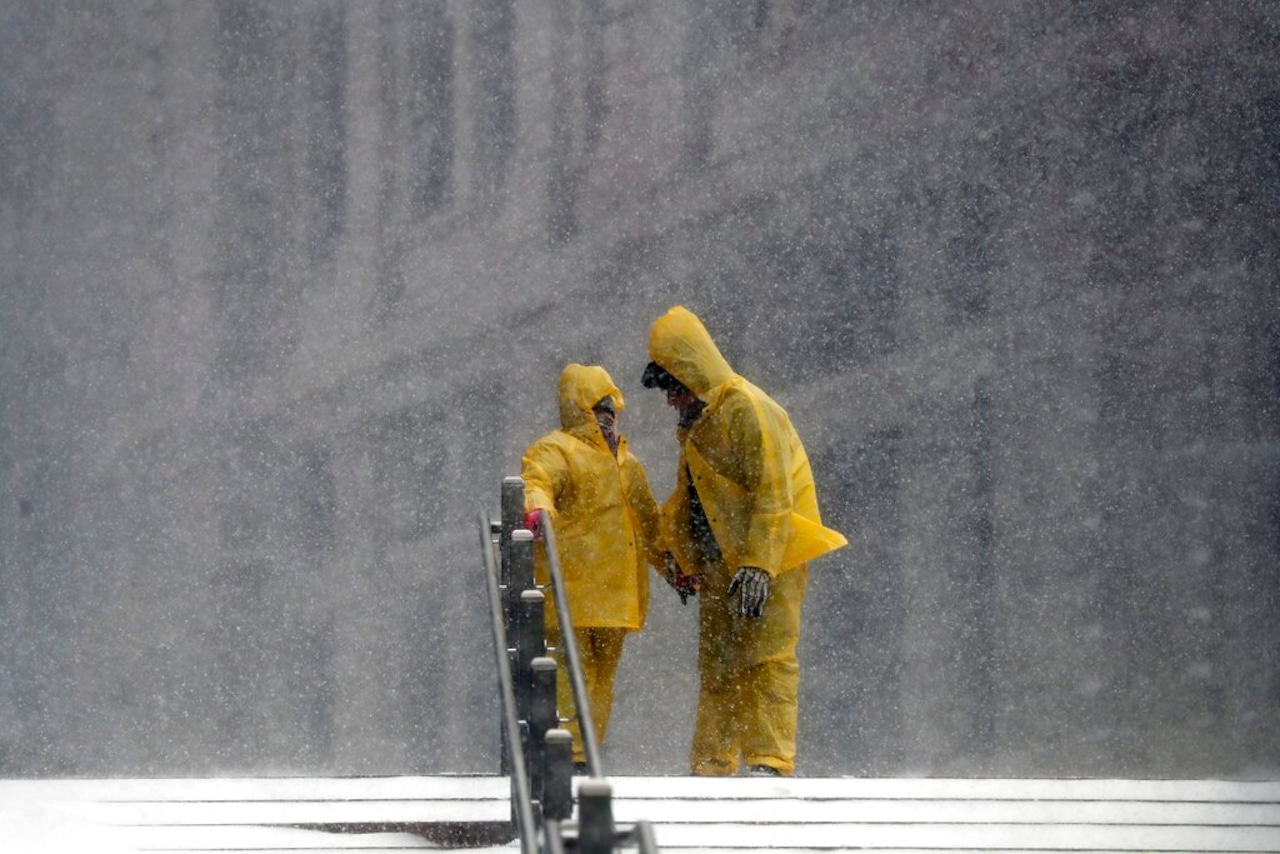
The state’s Department of Environmental Protection will dedicate new funding to nearly double the number of PurpleAir sensors being deployed in communities to detect fine particulate matter.
The plan is to distribute 202 sensors in this round of investment, in addition to 248 given out in 2021.
Readings from the softball-sized PurpleAir sensors will supplement data provided by 24 permanent air monitoring stations located around the state that test for pollutants such as ozone, carbon monoxide, nitrogen oxide and fine particulate matter.
Also called PM2.5, particulate matter is a mixture of solid particles and liquid droplets so small they can be inhaled and enter the bloodstream, contributing to asthma and other respiratory and cardiopulmonary illnesses.
Through the state’s Particulate Matter Air Sensor Grant Program, the PurpleAir sensors — which are installed by municipalities, community-based organizations and nonprofits, schools, and tribal communities at no cost — can provide data on a more granular level.
“Citizen scientists” can also purchase and install their own, feeding data in real-time to an interactive map that compiles readings from across the state.
At any given moment, the map shows where PM2.5 levels in the state are elevated and what risks may be associated with that elevation.
“We want to be able to look at communities, particularly environmental justice communities, to make sure that we are not seeing hotspots or neighborhoods that are adversely affected by air pollution sources,” Christine Kirby, the assistant commissioner of MassDEP’s Bureau of Air and Waste, said. “So getting the equipment out into the hands of people in communities and community groups allows us to do that.”
Environmental justice communities are defined by state law as U.S. Census block groups that meet one or more of the following criteria: the annual median household income is 65% or less of the statewide median, 40% or more of residents are minorities, or 25% or more are foreign-born or lack English language proficiency.
Historically, these neighborhoods have been disproportionately and systemically exposed to environmental hazards such as air pollution, contaminated sites, and climate change impacts.
The PurpleAir sensors empower communities to play a role in monitoring their air quality at a hyper-local level, MassDEP officials said. And the data can result in action.
Last summer, for example, when smog from the unprecedented Canadian wildfires descended on Massachusetts, PurpleAir sensors across the state were critical in informing MassDEP’s air quality alerts and messaging, Kirby said.
The city of Chelsea, which has experienced longstanding pollution from highway traffic and Logan Airport, partnered with MassDEP based on PurpleAir sensor readings.
Eventually, the state and U.S. Environmental Protection Agency set up a permanent air quality monitoring station in the city.
On an even more granular level, Glenn Keith, director of the Bureau of Air and Waste’s Air and Climate Program, recalled a time when an outdoor wood boiler was causing pollution in a neighborhood.
A nearby resident had a PurpleAir sensor, and working with the town, they were able to resolve the issue.
“It increases general awareness,” Keith said. “People may not even think about what’s in the air they breathe.”
The state agency has hired three full-time people dedicated to community-based air quality monitoring. The ongoing initiative will also include an upcoming pilot program — a partnership with two or three communities to deploy advanced technology, specifically black carbon, and multi-pollutant air sensors, in or near environmental justice populations.
Forty black carbon sensors will characterize diesel emissions in areas that experience high levels of truck traffic, while 50 multi-pollutant air sensors will measure fine particulate matter, carbon monoxide, ozone, and nitrogen dioxide.




